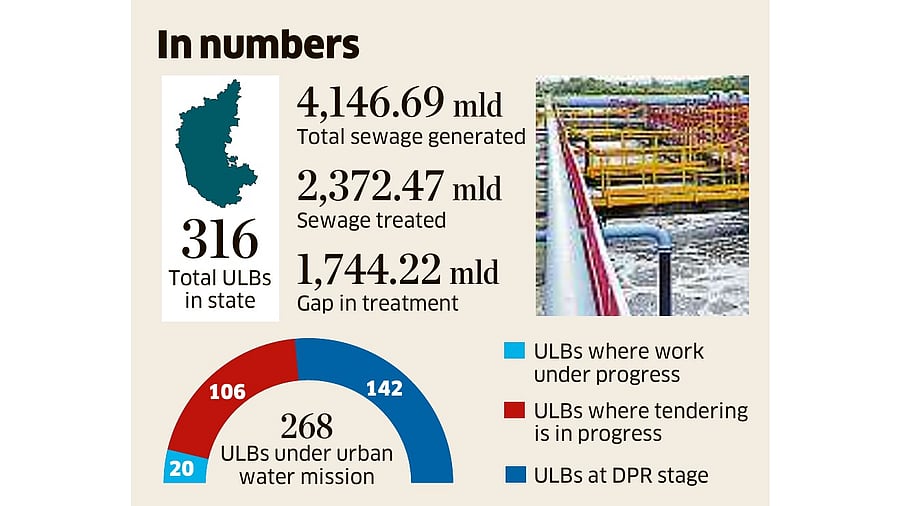
Lack of sewage treatment has emerged as a major threat to public health in Tier-2 and Tier-3 cities which continue to grow.
Karnataka’s Tier 2 and 3 cities are growing but struggling to comply with the waste management rules, thanks to lack of resources and instruments to maintain a burgeoning infrastructure for supplying water, treating sewage and other allied works.
Making a presentation on the state of affairs, Karnataka Urban Water Supply and Drainage Board (KUWSDB) chief engineer U Nalinakshi said that the board is working to provide drinking water and sewage treatment infrastructure, including underground drainage and treatment plants (STPs) for 315 urban local bodies excluding Bengaluru city.
Lack of sewage treatment has emerged as a major threat to public health in Tier-2 and Tier-3 cities which continue to grow.
The Karnataka Economic Survey 2024-25 had stated it had become a challenge to provide safe drinking water and sanitation to such cities due to the “inordinate” growth of the urban population.
Nalinakshi said the board has taken up the challenge seriously.
“We have set up 114 STPs of 802 mld capacity and are working to build 38 more with a capacity to treat 270 mld. The board has proposed another 95 plants of 330 mld capacity,” she said, adding that unlike previously, now plants are set up along UGD connection to channel the waste water.
Two hurdles
The ULBs are, however, facing two hurdles. First, there is Opposition by people to set up a STP with the official stating that they face resistance from nearby households to even to set up a UGD manhole/machine hole.
She stressed the need for long-term planning in Tier-2 and Tier-3 cities to reserve areas for treatment.
The second is the lack of funds to maintain the sewage treatment infrastructure. “Municipalities do not come forward to take over the maintenance of such infrastructure. This is because, unlike in Bengaluru, these local bodies are not collecting sewage service charges. As a result, they lack the funds,” she said.
An official from the Karnataka State Pollution Control Board said the government has to either allow the local bodies to collect fees or incentivise them to run the show.